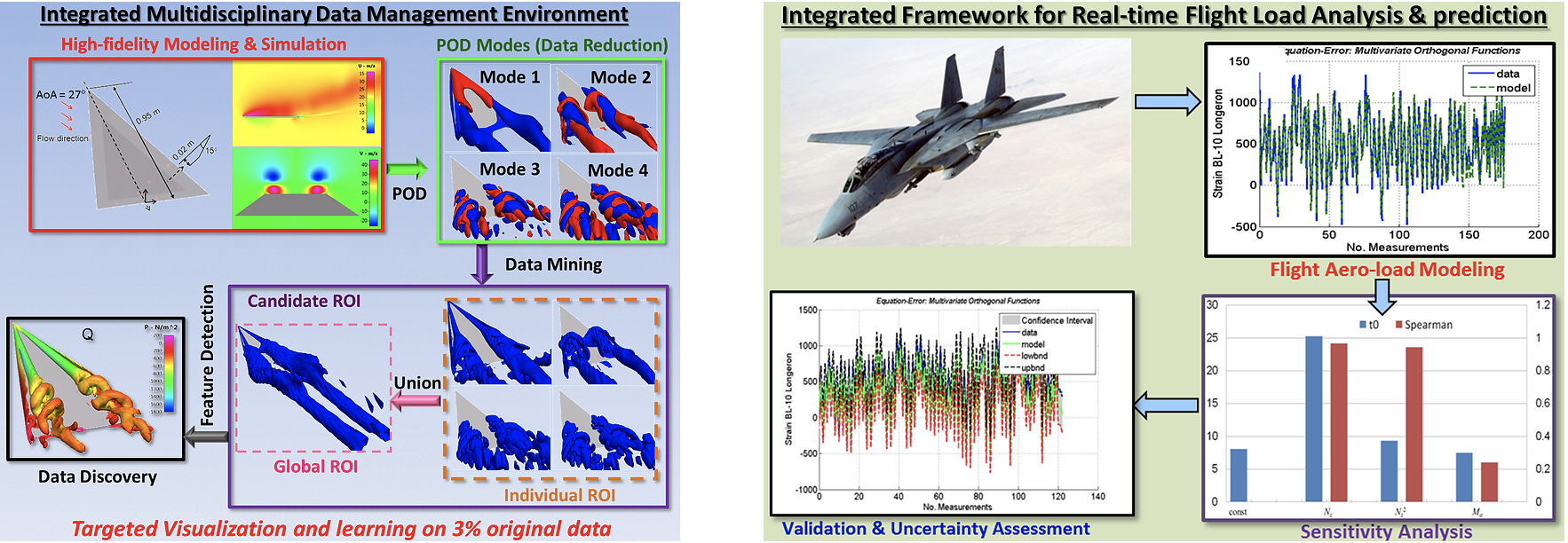Research

Multiphysics Modeling & Simulation
Core research of iMSEL focuses on developing multiphysics models to address critical CDS&E challenges in real-world engineering, including
- Multidisciplinary design analysis and optimization (MDAO)
- Uncertainty quantification (UQ)
- System-level analysis
- Sensitivity analysis (SA)
- Parameter estimation, among others.
Both multiphysics high-fidelity (MHF) and multiphysics variable-fidelity (MVF) modeling & simulation methodologies, serving as main workhorse to meet practical needs in CDS&E applications are thoroughly investigated in iMSEL. iMSEL also endeavors to spearhead the efforts and propagate such capabilities towards systems engineering in a variety of domains, such as aerospace, missile defense and ISR, microfluidics/nanofluidics & biomedical, energy and battery management, etc.
High-fidelity Modeling & Simulation
iMSEL has developed a variety of high-fidelity M&S: CFD and FEM capabilities for multiphysics phenomena analysis and design, including High-fidelity M&S capabilities to enable underlying physicals & phenomena understanding, data and pattern discovery, concept screening and evaluation, and quantitative design and optimization. Read more ...
Reduced Order Modeling
Even with salient advances in computing platforms and architectures nowadays, multiphysics and multi-scale modeling and simulation of highly complex systems based on full-blown high-fidelity models remain intractable. iMSEL investigates and develops groundbreaking reduced order modeling (ROM) techniques to bridge across the entire modeling and simulation hierarchy and allow fast turnaround (minutes to hours as opposed to days, weeks, or even months). The ROMs enable real-time or near real-time simulation capabilities, and can be used for large-scale design optimization & virtual prototyping, uncertainty quantification, prognostics & diagnostics, and hardware in loop (HIL) testing of embedded systems. ROM methodologies being analyzed by iMSEL include:
- Equation-based Model Order Reduction
- Data-driven ROM(Surrogate Model)
- Closed-form and Analytical Model
System-level Modeling
One of goals for developing varying-fidelity models, in particular, the reduced order models is to assemble them into a large-scale system-level model to simulate behavior and analyze reliability of complex systems based on their geometric and functional hierarchy. iMSEL studies and develops system-level modeling methodologies to cast varying-fidelity models into the systematic context for analyzing highly integrated microfluidic networks that involve electrokinetic and pressure driven flow, liquid filling, electrophoresis, mixing, homogeneous and surface-based reaction, etc. The system-level modeling represents a significant contribution to addressing emerging needs for design, uncertainty quantification, reliability analysis, and hardware-in-loop simulation, scene generation simulation, etc. for multiphysics and complex systems.
Massive and Read-time Data Analytics
Multiphysics computations have increasingly become a matter of routine and could generate an enormous amount of scientific data at the terabyte level. The advent of advanced sensor technologies entails real-time data analytics to support on-site decision making. Analyzing, discovering, and managing data to guide learning and utilization is a formidable task. Since the “Big Data” initiative announced in 2012, there are substantial endeavors and investments from both federal agencies and industries, such as NSF, DoD, NIH, DoE, NASA, Google, Amazon, among others, aiming to foster cross-disciplinary innovation and eliminate technological barriers for data-relevant applications. iMSEL has explored opportunities in both massive and/or real-time data analytics for DoD applications.
Systems Engineering
The ultimate goal of research of iMSEL is to apply multiphysics modeling and data-analytics capabilities, i.e., CDS&E, to system engineering and experimentation to dramatically reduce development cycles/costs and improve system performance. In prior research, iMSEL exploits a unique virtual prototyping approach, which synergizes multi-physics modeling-based design, fabrication, and experimentation for systems engineering. This approach enables rapid concept screening, efficient design automation, and reliable process control. iMSEL will further study and develop theories and methods to propagate CDS&E and virtual prototyping towards new systems, such as energy management and additive manufacturing systems. The long-term goalof iMSEL is to explore research opportunities in cyber-physical systems (CPS), in particular, microfluidics/nanofluidics, that can potentially integrate modeling, design, and networks for autonomous sensing and control of the entire physical processes. Read more ...








